Editor’s Note: This post is written by a member of LTV’s sponsored content team, The Leisure Explorers. Do you own a Leisure Travel Van and enjoy writing? Learn more about joining the team.
Beaches are some of the most relaxing places we visit. The scene is so familiar that it replays like a movie in my imagination: the road overlooking the bay, and then the four-mile-long bridge comes into view. We turn in East Point onto the bridge. The gulls swoop and dive all around us while oyster boats bob in the shallow bay. Then just ahead, the Gulf comes into view, and I feel myself exhale – all the stress and worries of the year seem to drain away at the beach.
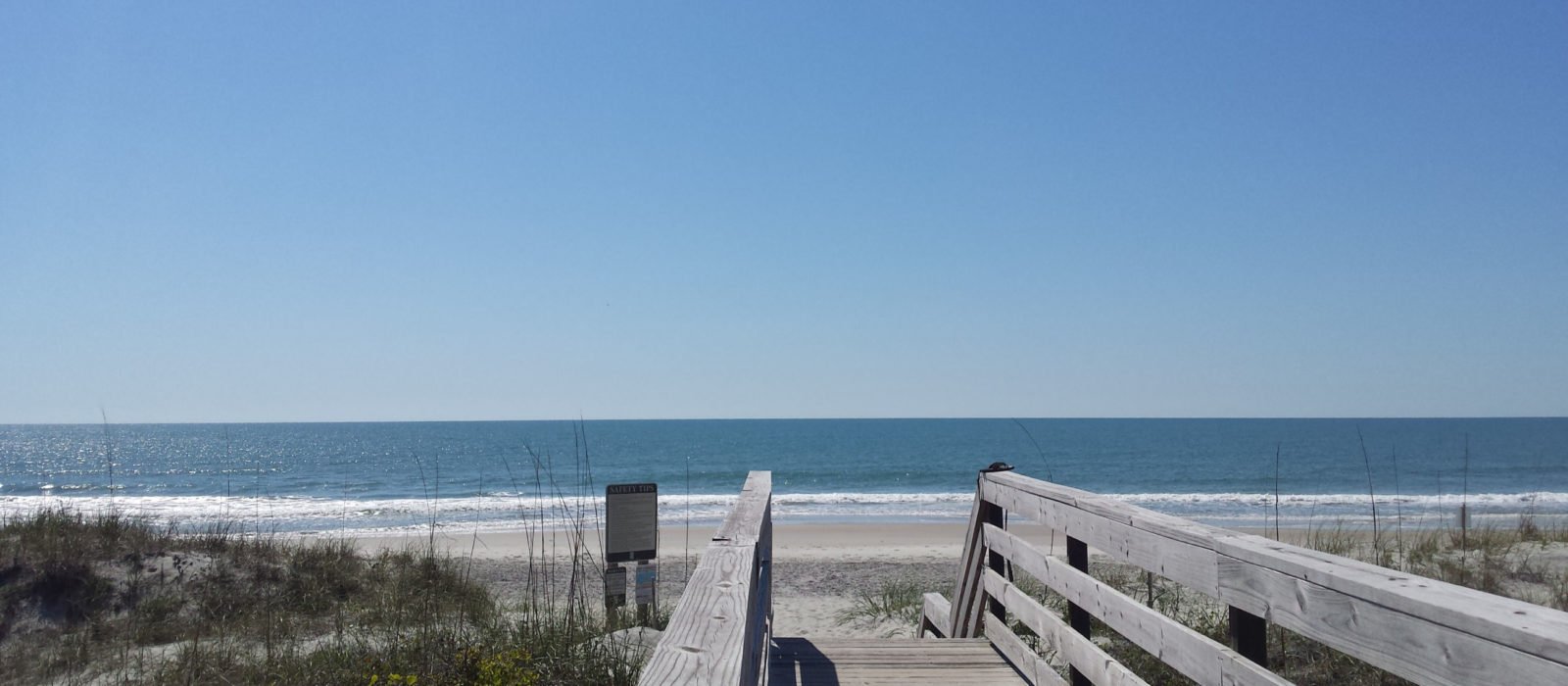
A lot of other people think the same way. So, finding a lovely, quiet beach with an RV campsite within walking distance can be challenging, and though I have found a few on the Gulf coast, my mission was to find a few quiet sandy strands on the Atlantic coast within a short drive from our Atlanta home. After several years of travel, I have found three great beaches, and all of them are nestled in State Parks. Protected from development and offering good RV camping facilities, all three of my favorites are within a six-hour drive from home: Jekyll Island, Edisto Beach, and Huntington Beach. The three have a lot in common and yet are unique in their own right.
I was in Savannah on business and mentioned to a colleague that I wanted to find a nice beach with an RV park nearby. She asked if I had been to Jekyll Island. I knew about the convention center there but hadn’t visited. After doing a little research online, I found Jekyll Island Campground and made a three-day reservation to check it out with my husband the following week, and what I found surprised me.
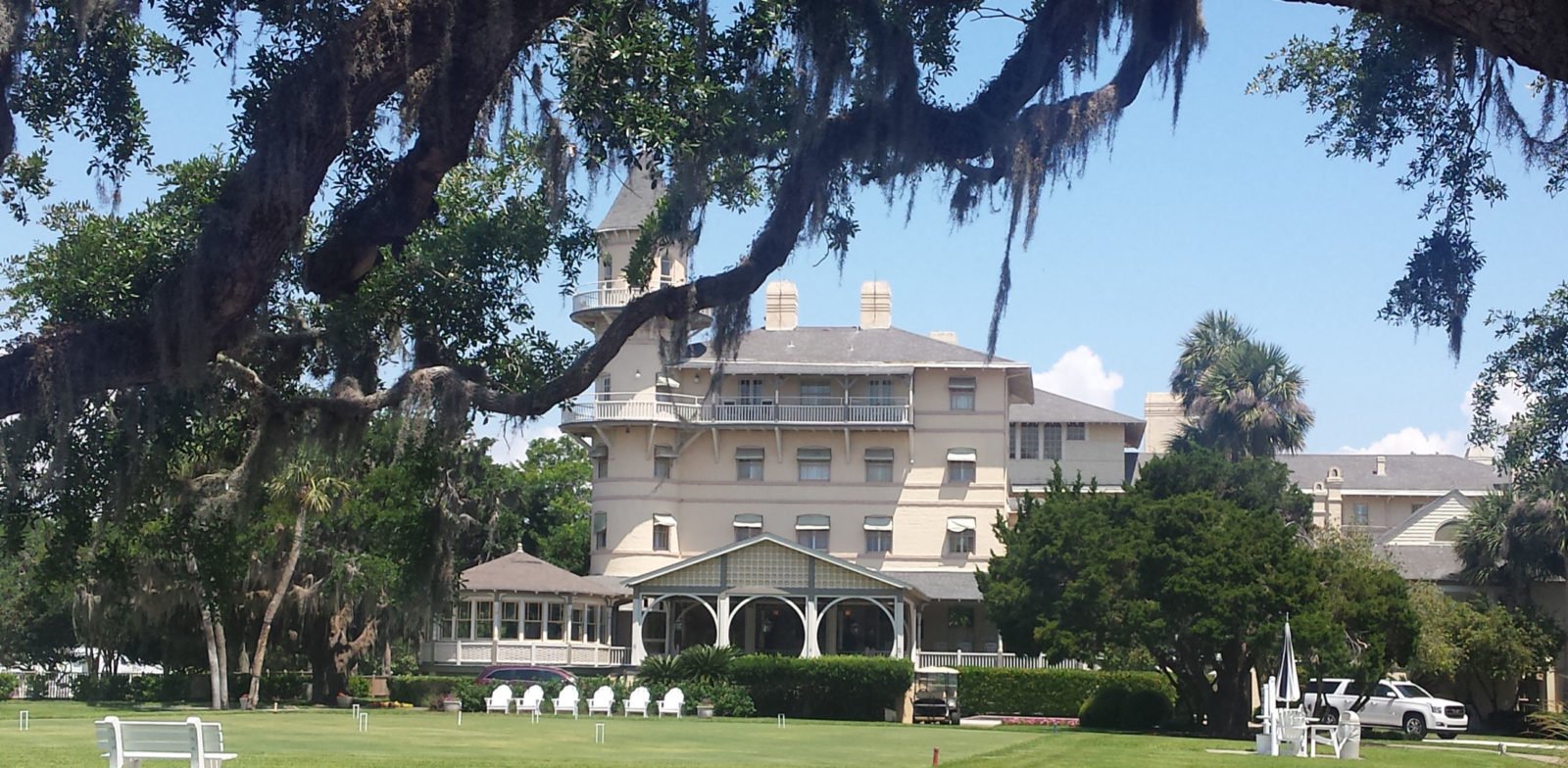
As a vacation destination, Jekyll Island has a long history. Originally it was purchased by two men who wanted to develop an exclusive hunting club for wealthy gentlemen. The club was a rousing success. So much so that the island was purchased by a group of investors calling themselves the Jekyll Island Club. The group included some of the wealthiest families in the country, like J.P. Morgan, William Vanderbilt, Joseph Pulitzer, and Marshall Field. Together, they numbered over 50 members/investors and built expansive “cottages” around the clubhouse for the members’ families.
Opening in 1888, the luxurious clubhouse played host to many extravagant parties and social events. All that power and prestige in one place made the Jekyll Island Club a hub for important meetings among the powerful members. The foundation for the Federal Reserve – the Aldrich plan, was formulated by members of the Jekyll Island Club.
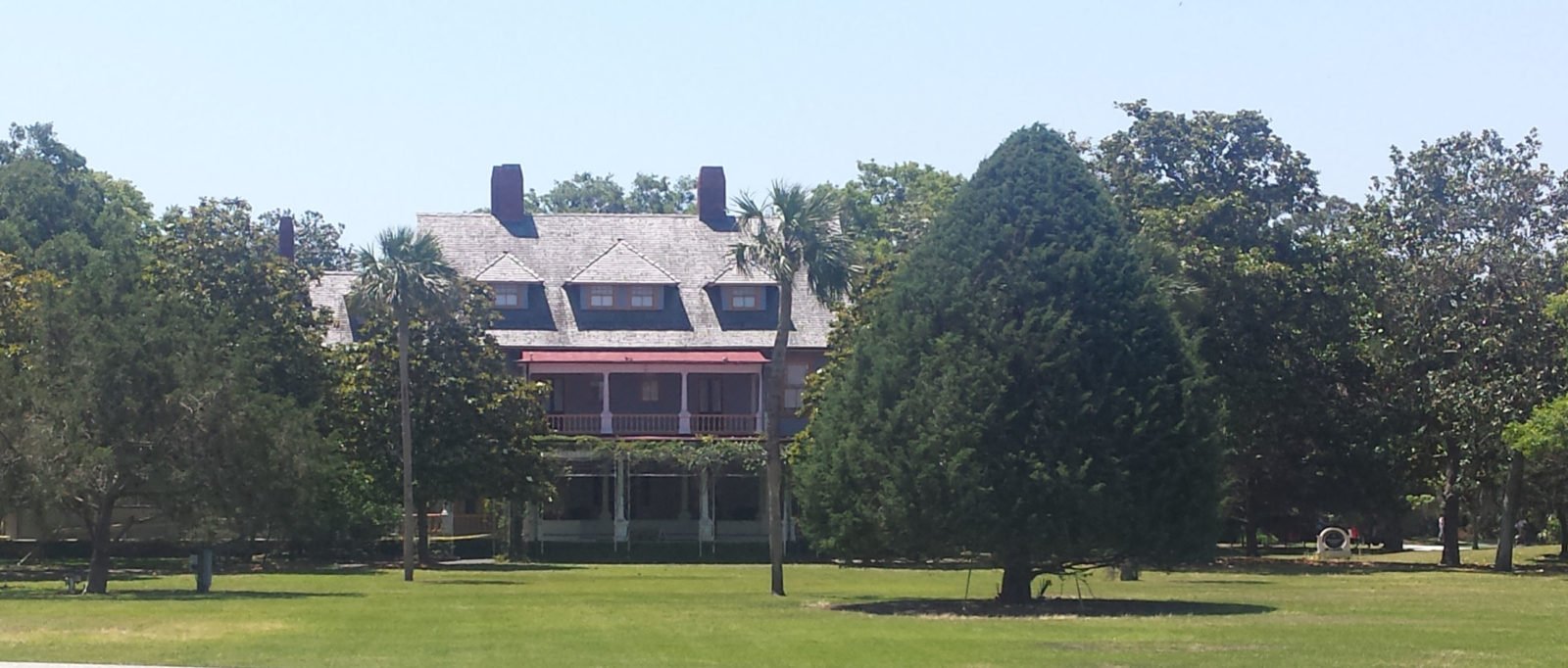
As times changed, the Club’s prominence began to wane, and it drifted into obscurity. The State of Georgia purchased the island for a mere $675,000 in 1947 and turned it into a state park. The Jekyll Island Club still stands, now a hotel, and is a part of the Jekyll Island National Historic District. It is surrounded by a group of renovated mansion-museums. These are the “summer cottages” that once were home to the millionaire club members and their families.
Although Jekyll may have been introduced to polite society through its financially wealthy members, today, it’s home to a wealth of a different type. As a rich natural environment, Jekyll introduces visitors to its barrier island beauty and the wildlife that shelters here. The Georgia Sea Turtle Center on the island’s western side is dedicated to research, education, and rescuing injured sea turtles. A valuable resource for the area, the Center takes in injured turtles for rehabilitation and then releases them back into the wild after they’ve healed. The center has a wonderful exhibit and guides visitors through the importance of habitat and conservation.
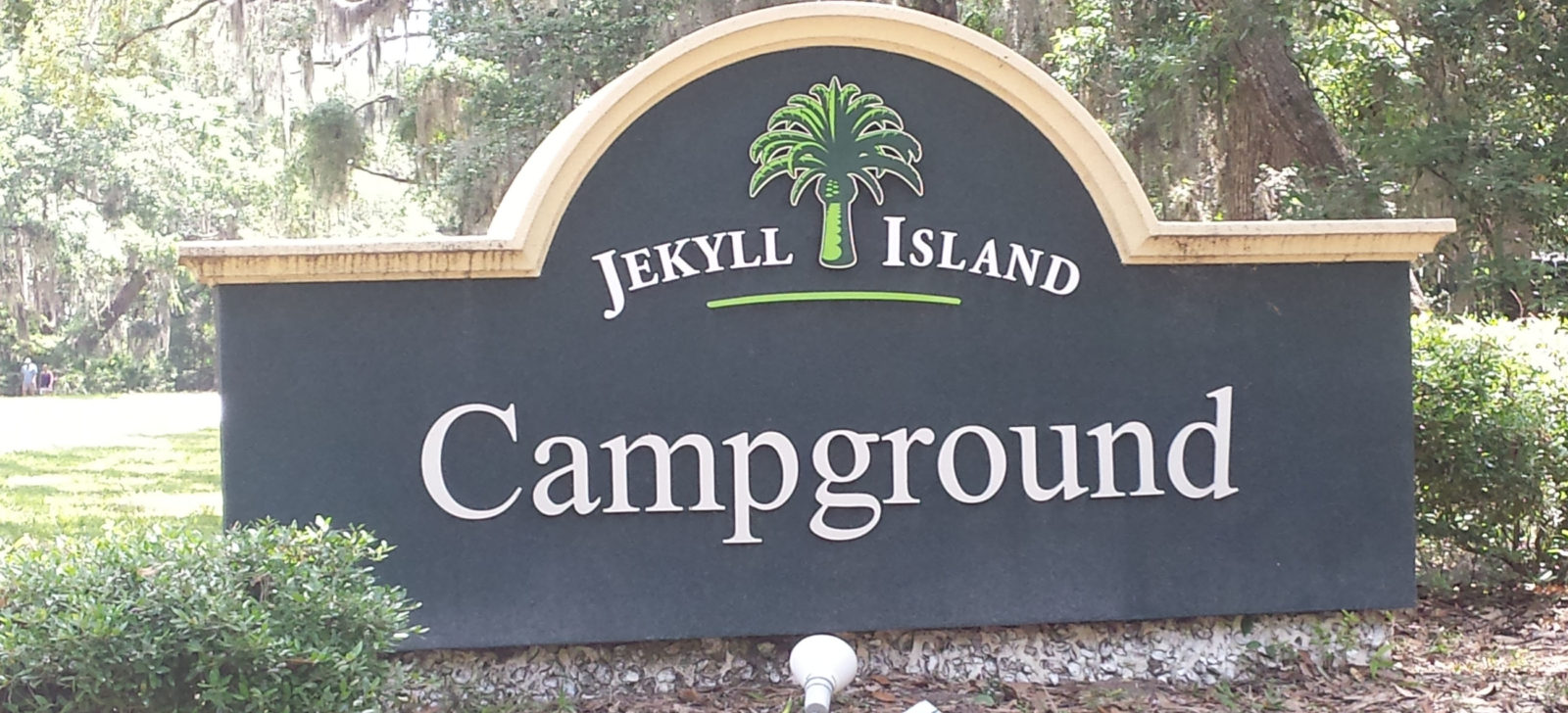
A haven among the trees, Jekyll Island Campground is large and wooded. It offers all the amenities needed in a more rustic atmosphere – and just about a mile walk, or a quick bike ride, to the beach. The road to the busy fishing pier is opposite the campground, making it an easy trek to get a line in the water.
There are a number of beach areas on Jekyll, but the most memorable is Driftwood Beach. Both spectacular and haunting, the sun-bleached branches and trunks of dead trees litter the sand. Some uprooted and twisted into weird shapes, and some stood straight and tall where they died in the salt water. Hurricanes wash away some of the trees from the beach each year, but the contingent that remains is still quite a spectacle. The sand is firm and makes bike riding on the beach a popular activity, weaving around the trees and splashing in the gentle surf.
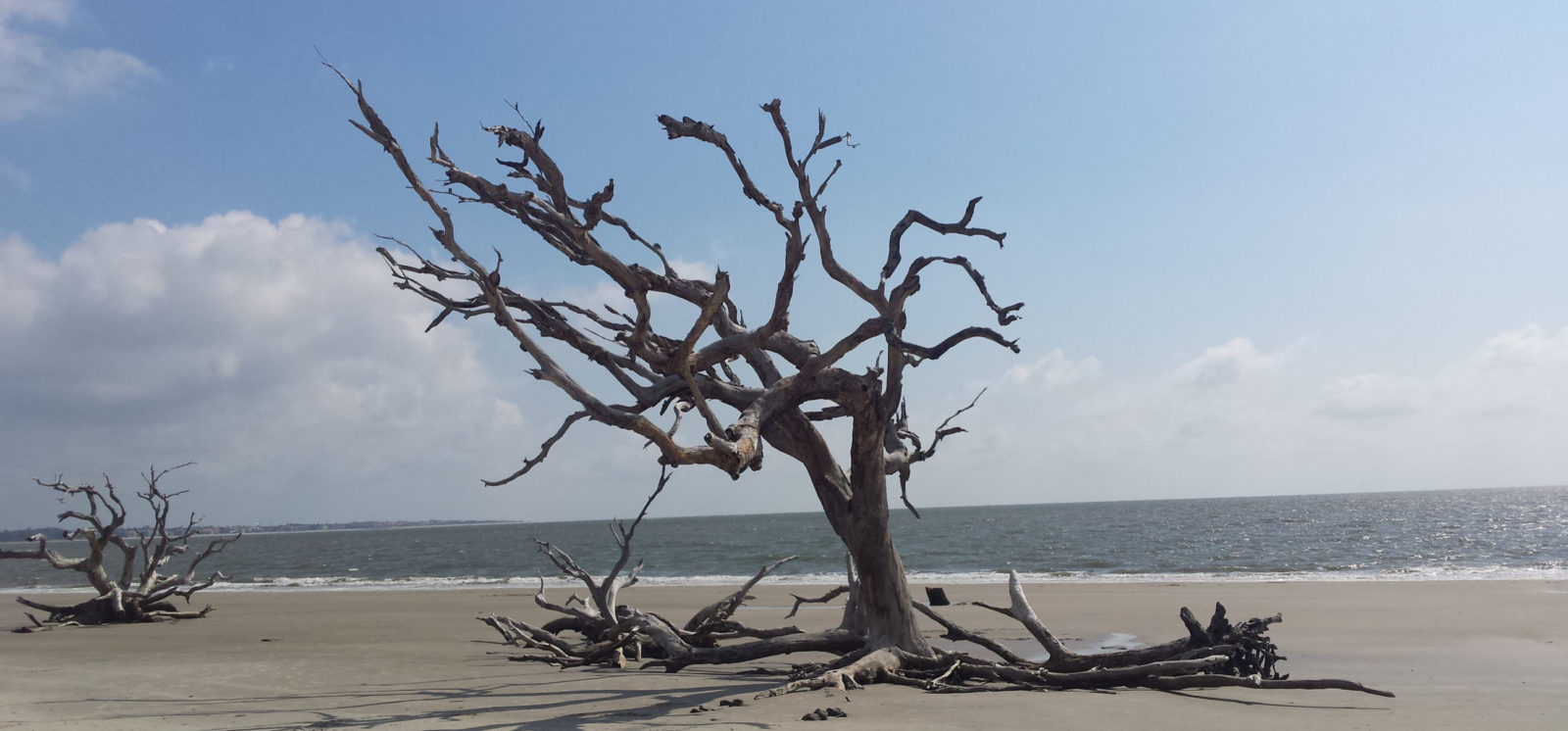
In fact, we found biking is the ideal mode of transportation all over the island. The island-wide bike path system leads almost everywhere you might want to go, including the beach, Historic District, shops, and restaurants. We also loved visiting nearby St. Simons Island for the lovely beach, a cute downtown shopping area as well as a lighthouse. If you go, stop at Southern Soul Barbeque – you’ll be glad you did! From Jekyll Island, you can reach St. Simons over the spectacular Sidney Lanier Bridge with its suspension cables resembling unfurled sails as they shimmer in the sunlight. That makes a trip to Jekyll an easy two-for-one kind of vacation destination!
Just a few hours up the coast from Jekyll, we discovered a gem most South Carolinians know well: Edisto Beach State Park. Its natural, undeveloped beach is a shell collector’s treasure trove. There are two campgrounds at Edisto Beach State Park: one in the woods and the other tucked into the sand dunes next to the beach. The site we reserved was in the beach campground next to the dunes. We could hear the surf from our RV – even on the inside. The campground is spacious with a lot of very tall Palmetto Palms, and the wind rustling through them is a lovely sound.
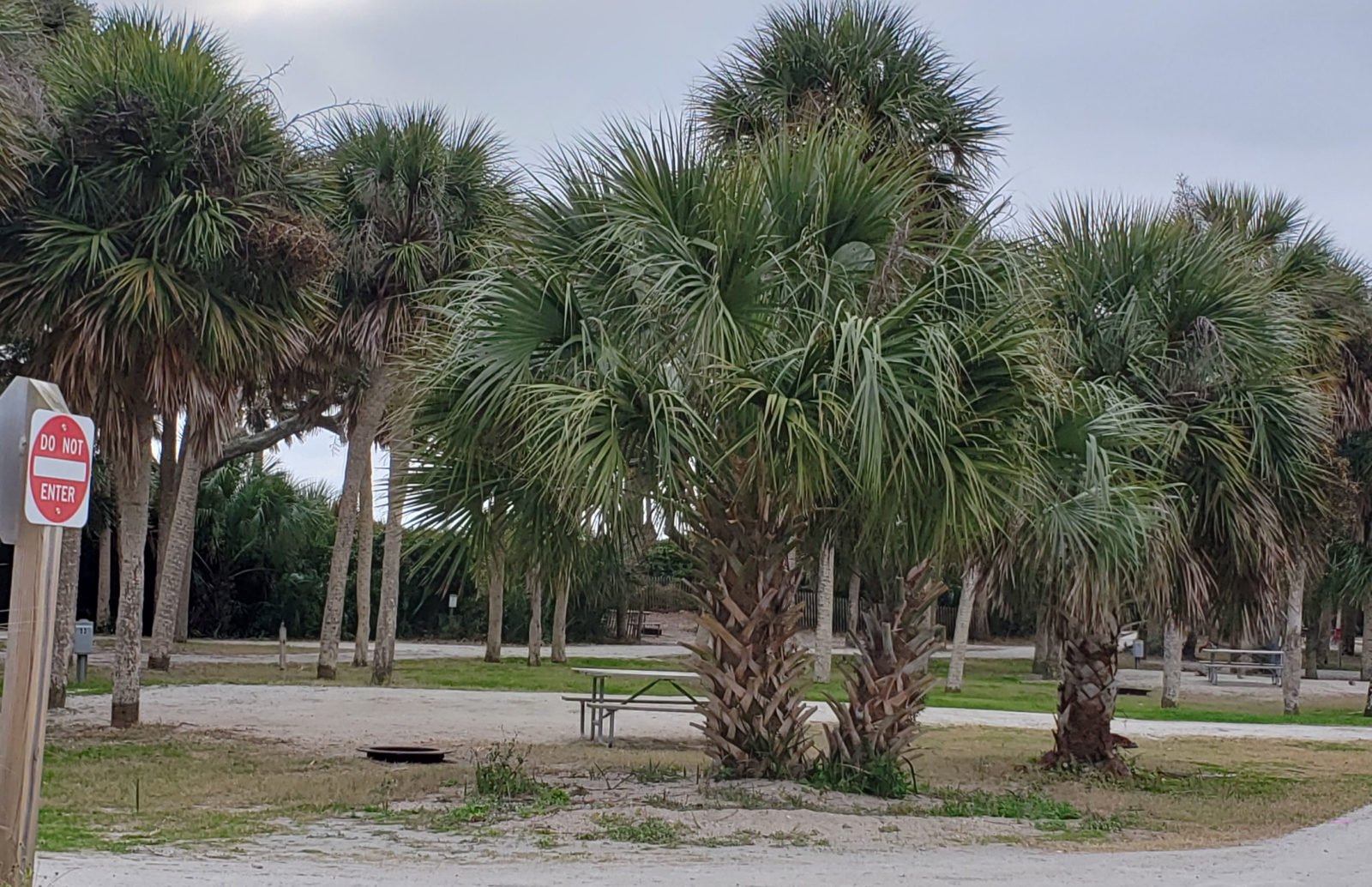
Although none of these beachside sites have a view of the beach, they are all just steps from the beach access – a walkway cut through the dunes. One of our campground neighbors mentioned that they come here frequently, and it is booked almost every weekend. That seems to be true for most beach and lakeside campgrounds. The best time to reserve a site is during the week. We made the trip in late January, and even then, the campground had quite a few bookings!
A quick walk over the dunes, and you’ll be standing on a stretch of narrow beach strewn with shells. Although the beach is narrow right at the entrance, it is very long And, just a bit further from the dune entrance, the beach seems to spread out offering a wider expanse for beach umbrellas and volleyball games.
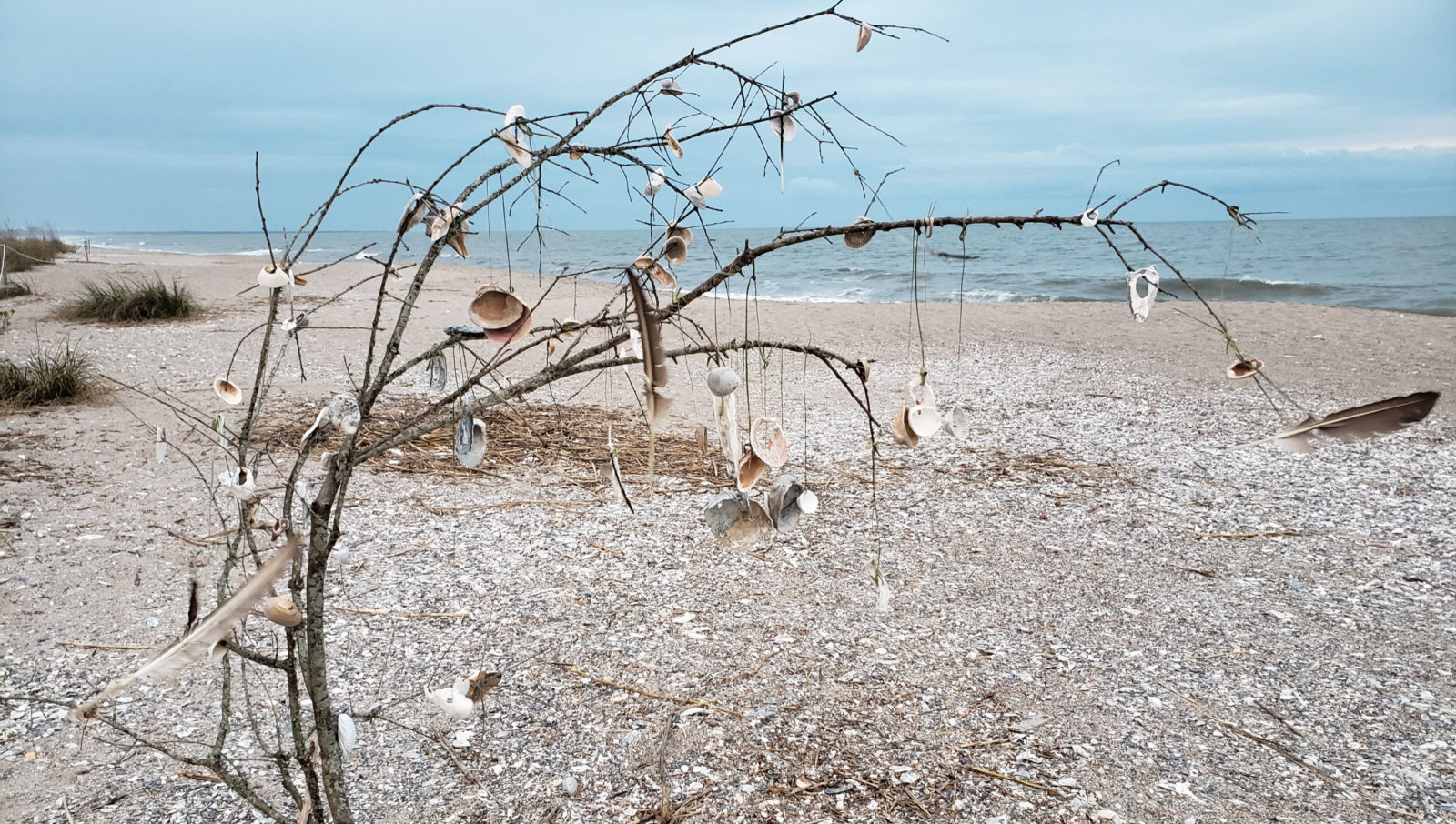
There are some large driftwood pieces on the beach – even small trees buried in the sand. Unlike Jekyll’s Driftwood beach, these trees have been washed ashore rather than dying in the saltwater where they stood. On our trip there, right after COVID, I gazed down the beach and saw, to my delight, a driftwood branch standing upright in the sand and fully decorated with shells and seagull feathers! The shells clacked together in the breeze while the feathers, held onto the branches with string, danced and twirled.
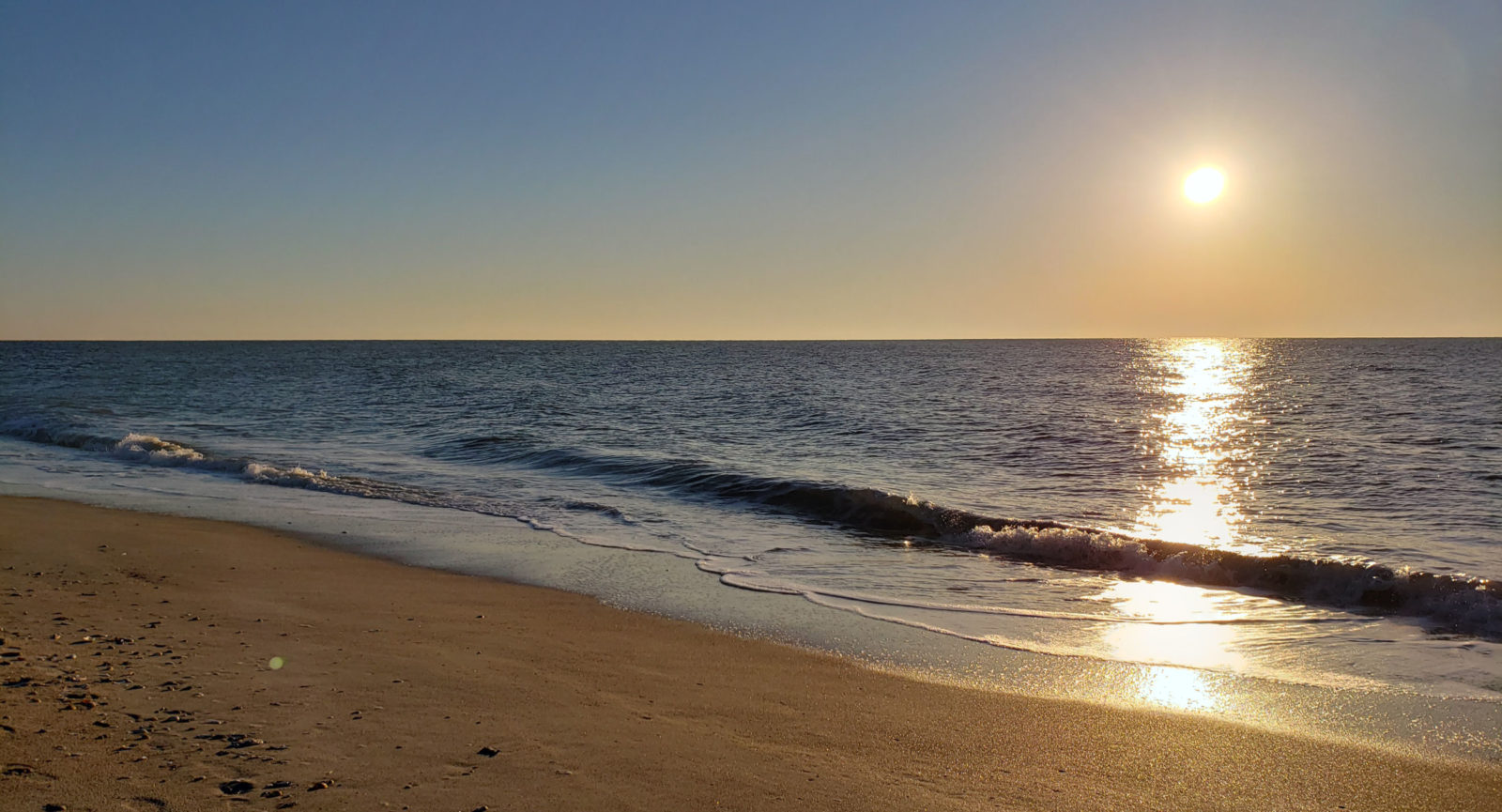
Edisto Beach State Park is more than just a beach, it is part of a buffer zone for the 350,000-acre Ashepoo-Combahee-Edisto Basin System (ACE Basin). The ACE Basin represents one of the largest undeveloped wetland ecosystems on the Atlantic Coast, offering shelter and breeding grounds for wildlife. I wondered how much sanctuary it provides during hurricane season. This coast seems to take a beating during a storm, but I know wetlands absorb a lot of wave energy, so perhaps it also offers some protection for the surrounding area.
During our stay at Edisto Beach, the clouds blocked the sun most of the time, but even under cloud cover, the beach is lovely and a perfect setting for long, casual walks and shell-collecting adventures. The beach took on a different character when the sun peeked from behind the overcast skies. Awash in the sunshine, the sand is brilliant, and the reflection on the water’s surface sparkles. Adding to the idyllic image, a squadron of pelicans fly so close to the water they seem to skim it with their feathers. I take a few photos, stare at the sea for a few moments, and then return to camp. Jim is in the driver’s seat waiting for my return, and with the click of my seat belt, we are on our way.
Another special State Park is one we have visited several times: Huntington Beach State Park near Murrell’s Inlet in South Carolina. On our first visit there, we were fascinated by the ruins of a mansion that was once the winter retreat of Archer and Anna Hyatt Huntington. Atalaya Castle, named for the Spanish term for watchtower, was designed in the Moorish style and, indeed, has a 40-foot square tower in the center of the inner courtyard. Originally a 30-room mansion, the castle also served as a studio for Mrs. Huntington’s sculpture work.
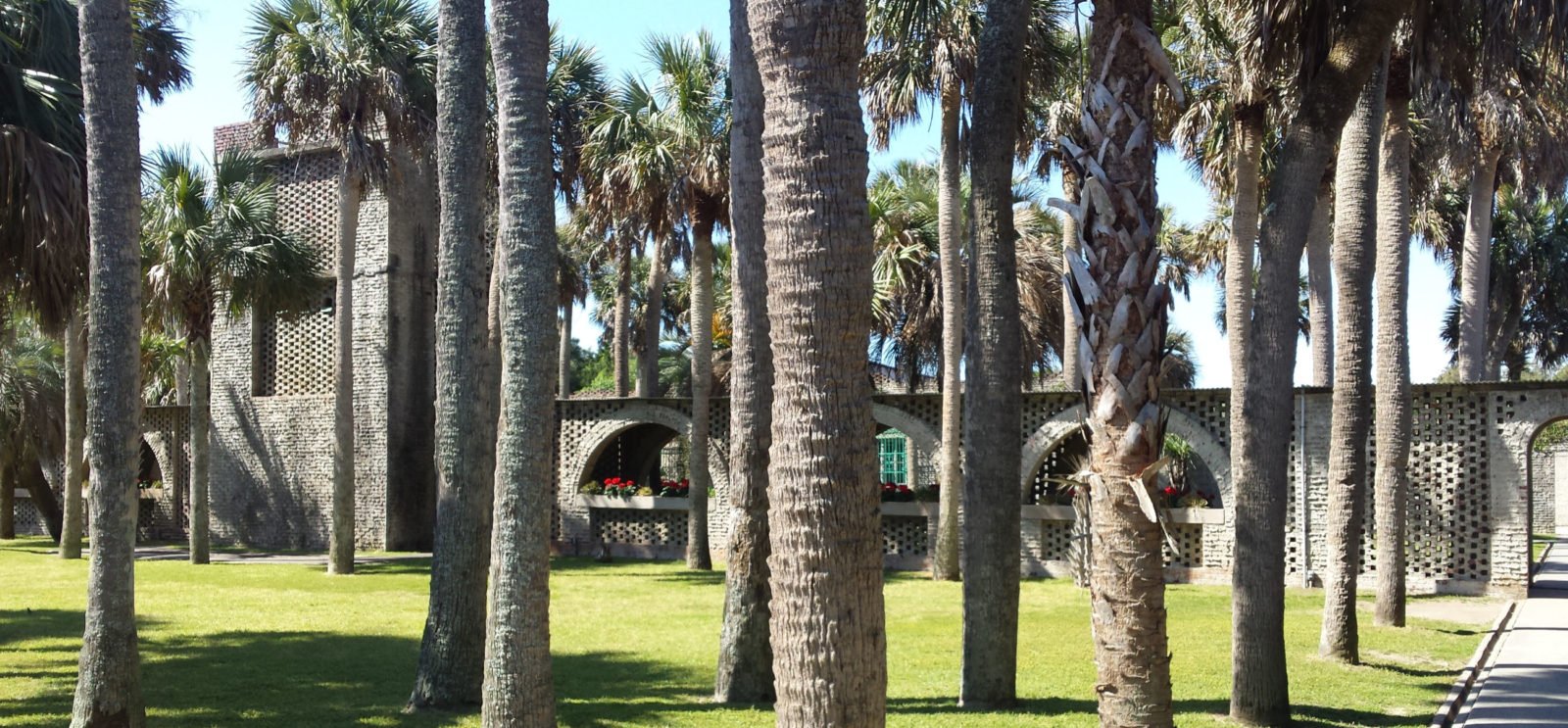
The studio featured a 25-foot skylight and opened onto a small courtyard where she worked, often using animals as her subjects. Her studios included stables, a kennel, and a bear pen to house the animals she was sculpting. You can still view Mrs. Huntington’s sculptures at Brookgreen Botanical Garden across the road from the State Park, where they display the largest collection of American Figurative sculptures in the country.
But the real legacy of the Huntington’s is the gift of their beach estate to the State of South Carolina to be used as a park and preserve. The 2,500-acre estate includes a beach, salt marsh, backwater ponds, and maritime forests. The park ranger pointed out that there are over 300 bird species in the area, including double-crested cormorants, brown pelicans, ruddy turnstones, and purple sandpipers. In fact, we watched cormorants diving in the salt marsh and saw them stand on pilings with wings outspread to dry.
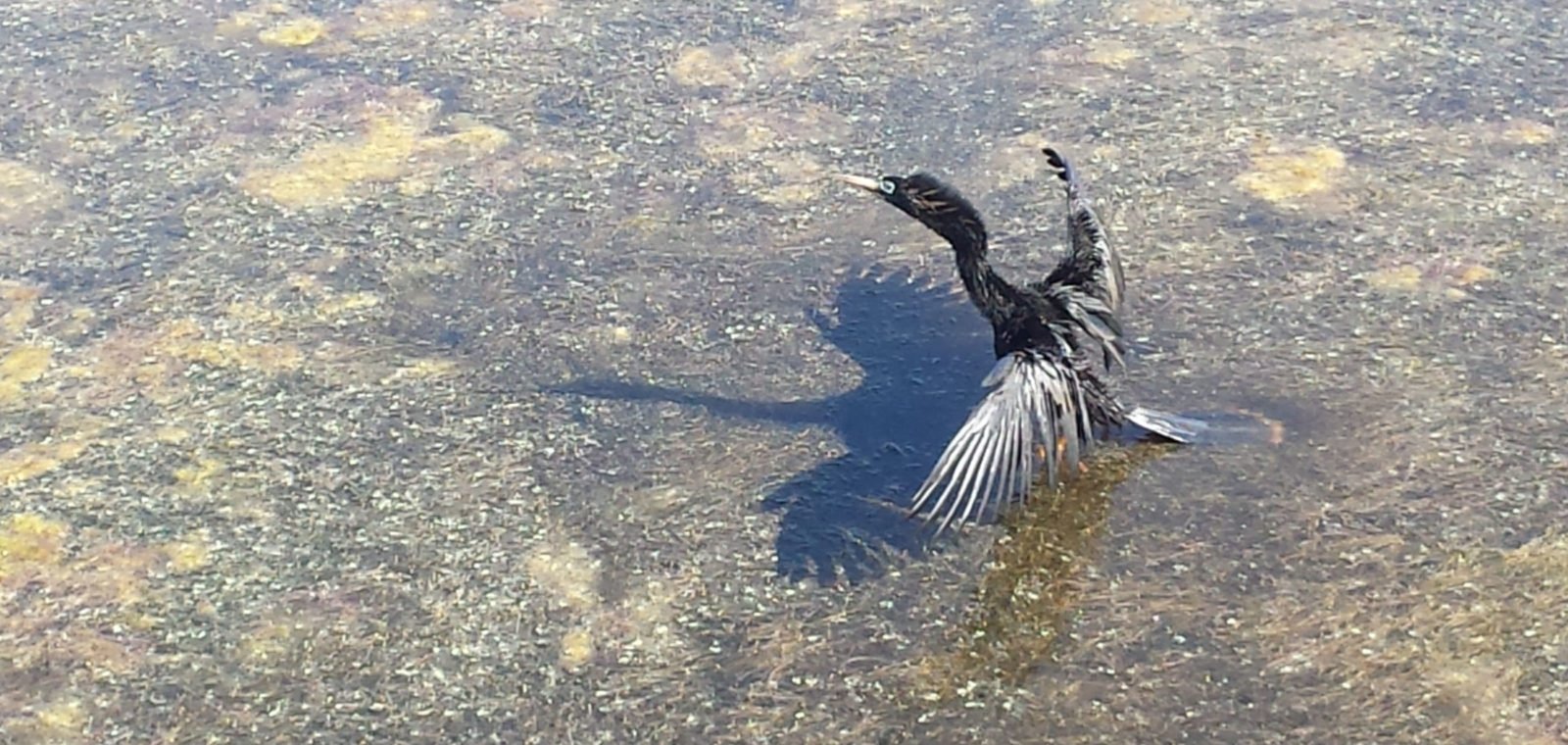
The campground is divided into two segments, and we chose the one to the left of the entrance. The sites are large, with grass, sand, and trees. The path to the beach from the campground leads through a maritime forest and is about a two-minute walk on a path that is sometimes sandy and sometimes a boardwalk. The beach is lovely, with wide stretches that invite a leisurely stroll. The dunes protecting the campground are topped with grasses, waving in the Atlantic breeze. In late spring, you might find sea turtle nests burrowed into the dunes, or, later in the summer, you could be one of the very lucky few to see a nest of turtles hatch. Yes, it looks as inviting as it sounds. The history and wildlife make this a great destination, and the beach is a keeper too!
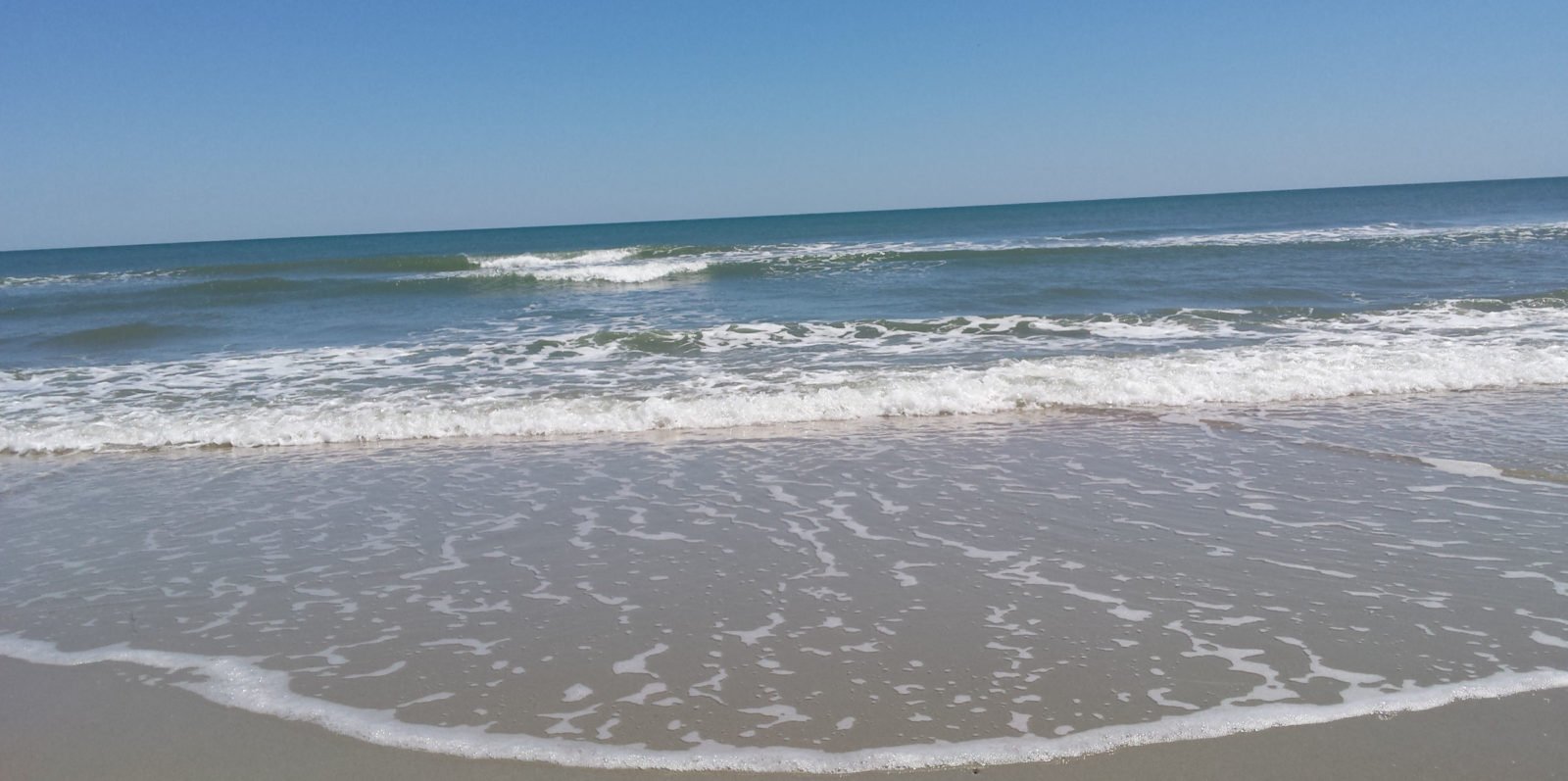
These three beach state parks are within easy reach of home for us, and though we love other beaches from the Gulf coast to the Keys to the coast of Maine, these are familiar and often our default for a quick getaway. For those who are further from the Atlantic coast, these three State Parks are good stops as you work your way up the coast from Florida. You’ll find good RV camping facilities, lovely beaches, and something interesting to explore beyond the beach!


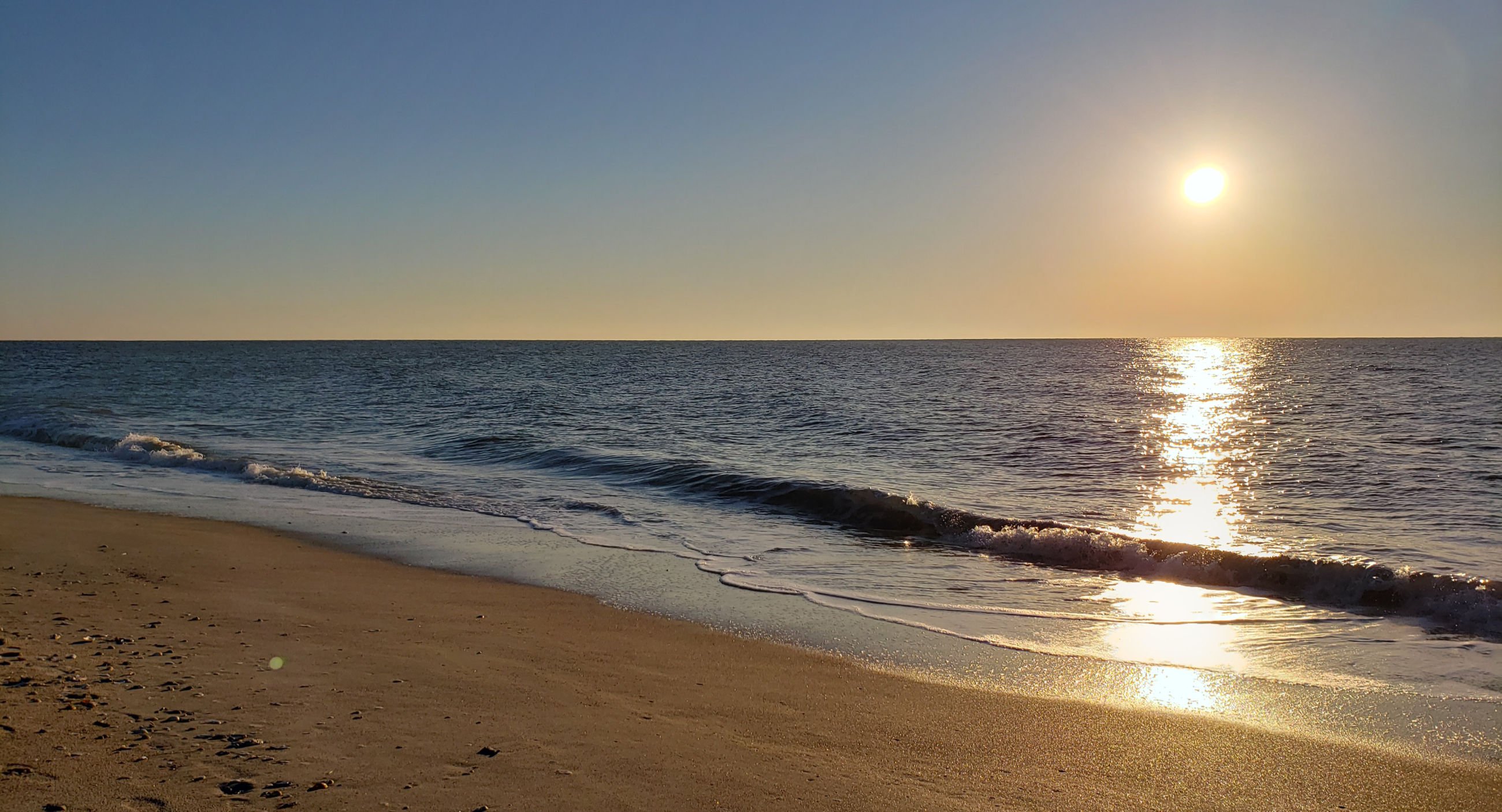
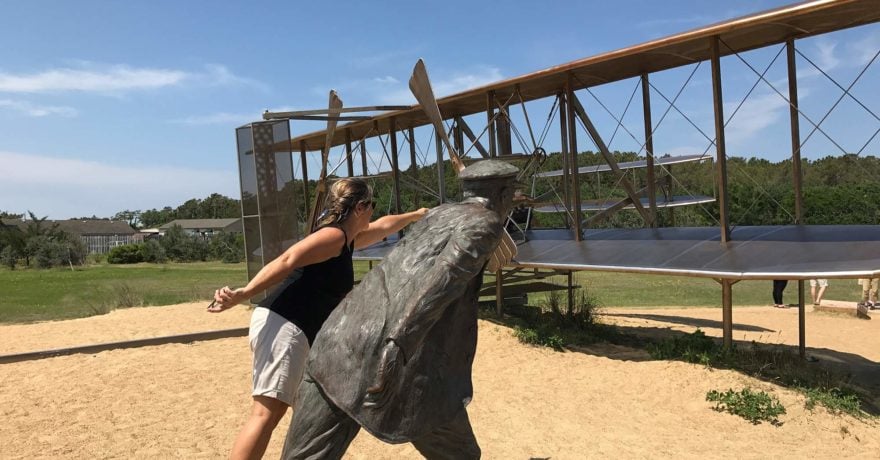
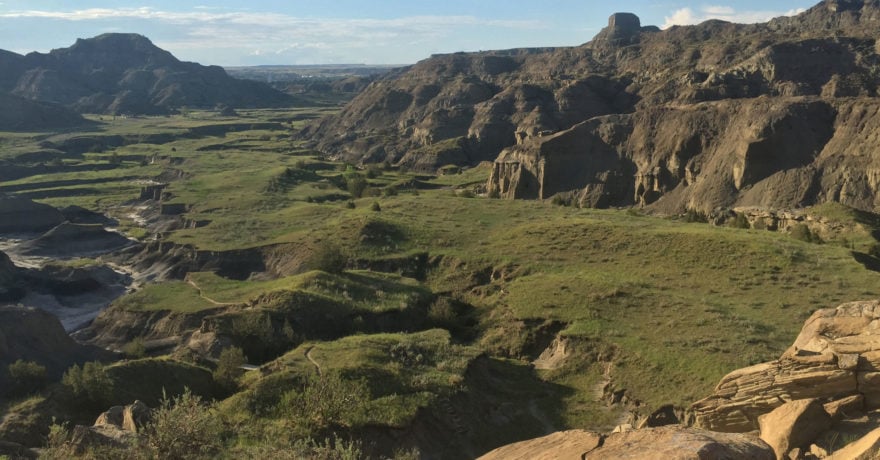
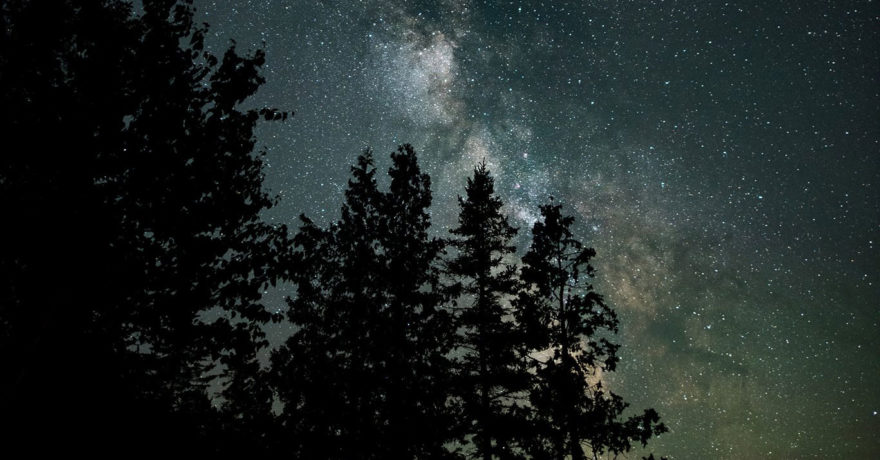
Comments